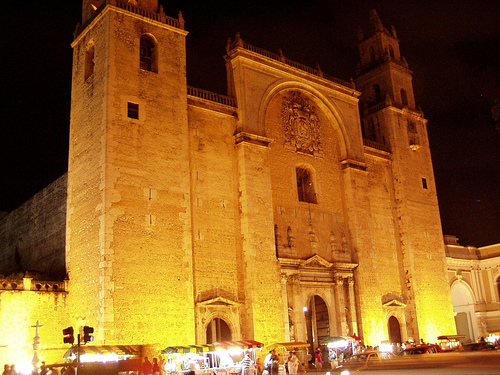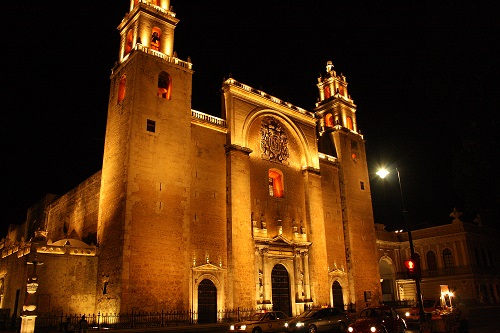Don Murphy from International Living describes the White City from an “Ex-pat” point of view…
Near the northern coast of Mexico’s Yucatan Peninsula, about 22 miles south of the Gulf of Mexico, lies the regal colonial city of Merida. This beautiful, vibrant city of some one million people offers culture, sports, modern infrastructure, world-class affordable medical care, and handy access to the Gulf of Mexico. It’s easy to understand why Merida has long been a favorite of expats. It is also among the most historically significant cities in all of Mexico.
Capital of the state of Yucatan, Merida’s ancient roots go back to, what was formerly, the Maya city of Tho´, also known as Ichkaanziho´. And it is Merida’s rich history and current indigenous influences, mixed with a modern lifestyle, up-to-date infrastructure, and a reduced cost of living that has attracted large numbers of expats.
Appreciation for Merida, its rich cultural heritage and gorgeous architecture, often comes from understanding its painful history. Merida endured a significant amount of trauma before emerging as it has.

Catedral de Mérida
Though bravely battling against an overwhelming Spanish force of Conquistadors armed with broadswords, various gunpowder weapons, and shielded with metallic armor, Tho´s Maya warriors were outmatched against their invaders. With only wooden clubs, cotton padding on their bodies, and using crude spears and flint-tipped arrows, the fierce Maya men fought and died trying to repel the invaders. They eventually lost the protracted battle and the city of Tho´ fell to the Conquistadors in 1540 and was renamed Merida after a favored city in Spain.
But the fighting continued for another two centuries as the Maya resented being invaded and enslaved. In fact, not only did the Spanish want to extract all the wealth from Mexico and its people, but they were also under orders of the catholic church to destroy sacred Maya temples and build catholic churches to convert the indigenous people to Catholicism.
Grand temples as well as shrines and other Maya structures were deconstructed using enslaved Maya labor. The Conquistadors then ordered that the enormous carved stones were to be used to construct Catholic churches and other public buildings and some large residences that still stand today in Merida’s central historic district. The Maya carvings on the stones are clearly visible. These architectural shrines to ancient history provide a breathtaking backdrop to the city.

Catedral de Mérida
Merida is believed, by many historians, to be the oldest continually occupied city in the Americas. It is a stunningly beautiful city, its rich history on display through its architecture and the strong indigenous influence of its people.
The delicious regional food competes with the architecture for your attention and one cannot look at any building in the large historic district without being forced to feel something about the way that this city and all colonial cities came to be.
by Don Murphy for International Living
Source: International Living

